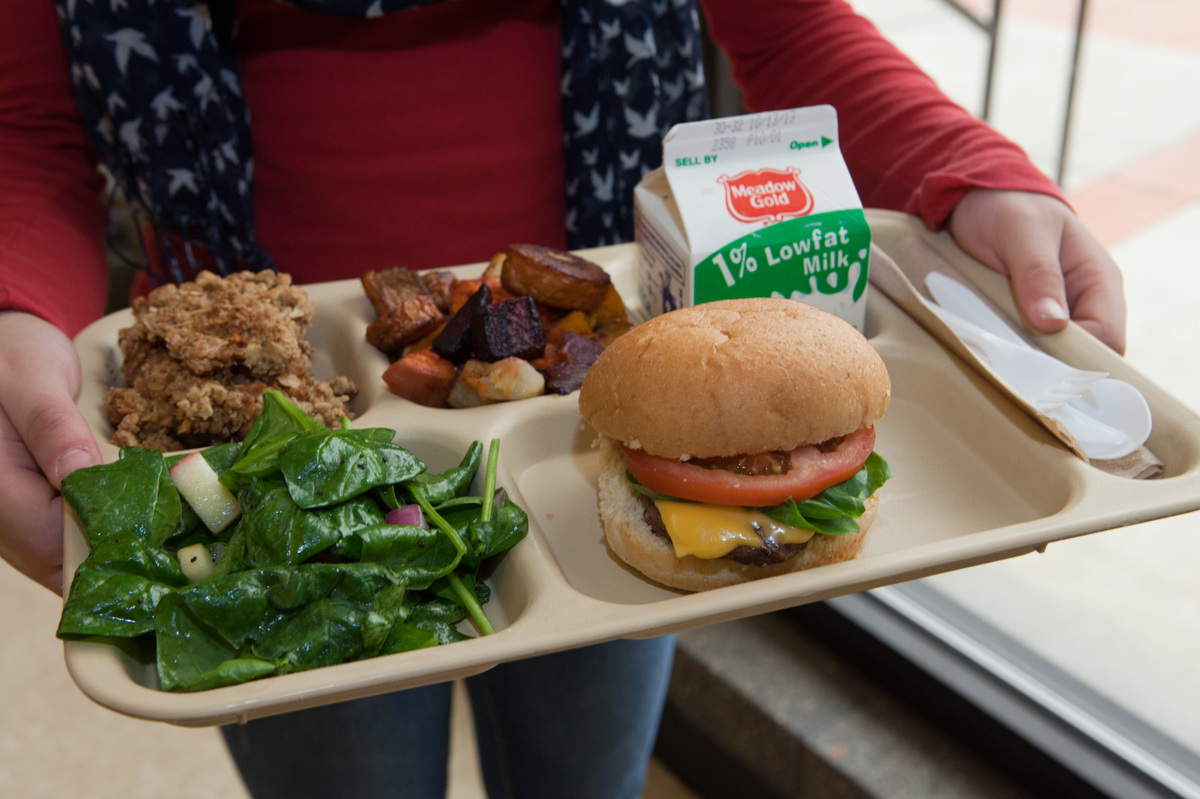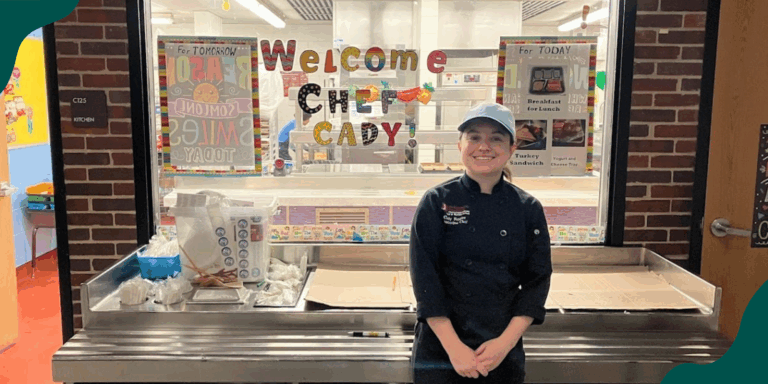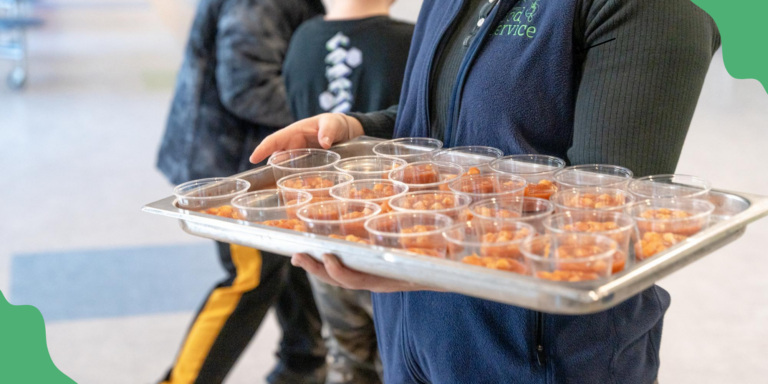USDA’s Proposed Rule for School Meals Shines a Light on Local
The USDA’s proposed school nutrition and local sourcing guidelines are best served with food education.
The USDA’s proposed school nutrition and local sourcing guidelines are best served with food education.

Last week, the USDA announced a proposed rule to update nutrition standards for school meals. These recommendations build off of the incredible work of school nutrition professionals to deliver nourishing food to students every day—including during the pandemic—and they’ll impact millions of kids who eat school meals.
Here’s an overview of what’s included:
FoodCorps celebrates the USDA’s proposal to support schools in buying local menu items and serving culturally relevant foods. School meals are often the most nutritious meals a child will eat during the day, and updated guidelines like these help to ensure consistency in school meals across state and district lines. However, we also know it takes more than a balanced plate to make a meal nourishing and appealing. Here are some things to consider.
We know kids are more likely to eat the nutritious foods on their plate if they’ve tasted them before—ideally, several times before! That’s where food education comes in. In hundreds of schools nationwide, FoodCorps members teach kids about nourishing food in gardens, classrooms, and cafeterias. These lessons include how to grow, harvest, and cook different nutritious foods—and come with plenty of opportunities to taste those foods, too.
This approach is proven to work; students in schools with more of FoodCorps’ hands-on learning eat up to three times as many fruits and vegetables as students in schools with less hands-on learning, a Columbia University study found.
In FoodCorps schools, students might follow the growth of a plant from seedling to strawberry, or choose between two preparations of butternut squash in a cafeteria taste test. They might share stories about their favorite family food traditions, or make healthy snacks with veggies grown in the school garden. Later, when kids see those same fruits and vegetables in the cafeteria, they’re eager to reach for them and more likely to eat them. This classroom-to-cafeteria link is an important step when rolling out new options, like a salad bar or a new vegetable on the menu.
Hands-on, experiential lessons help students develop agency and confidence and get them excited to try new things—and can even improve academic performance in other subject areas. What kids eat at school matters, not just for their daily fuel, but for the decisions they’ll make and the relationship they’ll have with food for the rest of their lives.
FoodCorps believes that in order for school meals to truly nourish kids, they must be culturally relevant, scratch-cooked, locally sourced, and served in an inclusive environment. This means serving foods that are important to kids’ cultures and procuring ingredients from nearby farmers and producers. It also means making cafeterias calm, affirming spaces, and ensuring kids have enough time to eat their meals.
FoodCorps works with countless school nutrition professionals who are innovative and resourceful when it comes to serving delicious, culturally relevant meals. These staff work within a complex set of rules and guidelines just to purchase the supplies and ingredients they need to feed our children. Buying food directly from local farmers and suppliers has many benefits, including more reliability and fewer supply chain disruptions (even during COVID). Purchasing directly from producers also keeps food dollars in the community, stimulating the local economy.
Even better is that building those local relationships cultivates community and a direct line of communication between schools and food suppliers. Local producers can choose crops and ensure inventory that are most relevant as schools build their menus.
When pandemic-era supply chain disruptions began affecting cafeterias, FoodCorps listened to school nutrition leaders’ stories of resilience. Their solutions ranged from working with local bakeries for staples like rolls and tortillas, to local suppliers delivering creative grab-and-go packaging solutions, to partnerships with local farms for consistent produce orders.
As FoodCorps alum Phoebe Wong shared during last year’s White House Conference on Hunger, Nutrition, and Health: “Listen to the farmers. They know what is best for their community.” The provision in the USDA’s proposed rule allowing schools to prioritize “local” in the purchasing process is an important move to better connect farmers and schools and, ultimately, to better nourish our nation’s children.
The USDA held numerous listening sessions before developing this proposal. Now they want to hear from stakeholders—including parents, students, school district leaders, and food suppliers—before finalizing this rule. The public comment period is open until April 10, so consider sharing your thoughts on the importance of local, culturally relevant food in school!
We’re hopeful that, alongside these updated nutrition guidelines, we’ll see continued investments from the government in our kids’ wellbeing, and in the people who feed millions of students every day. Our kids’ futures are counting on it.

The Policy Brief: 2025 State Policy Updates

Alumni Spotlight: Cady Molloy, School District Executive Chef

6 Careers in Food That Make a Difference